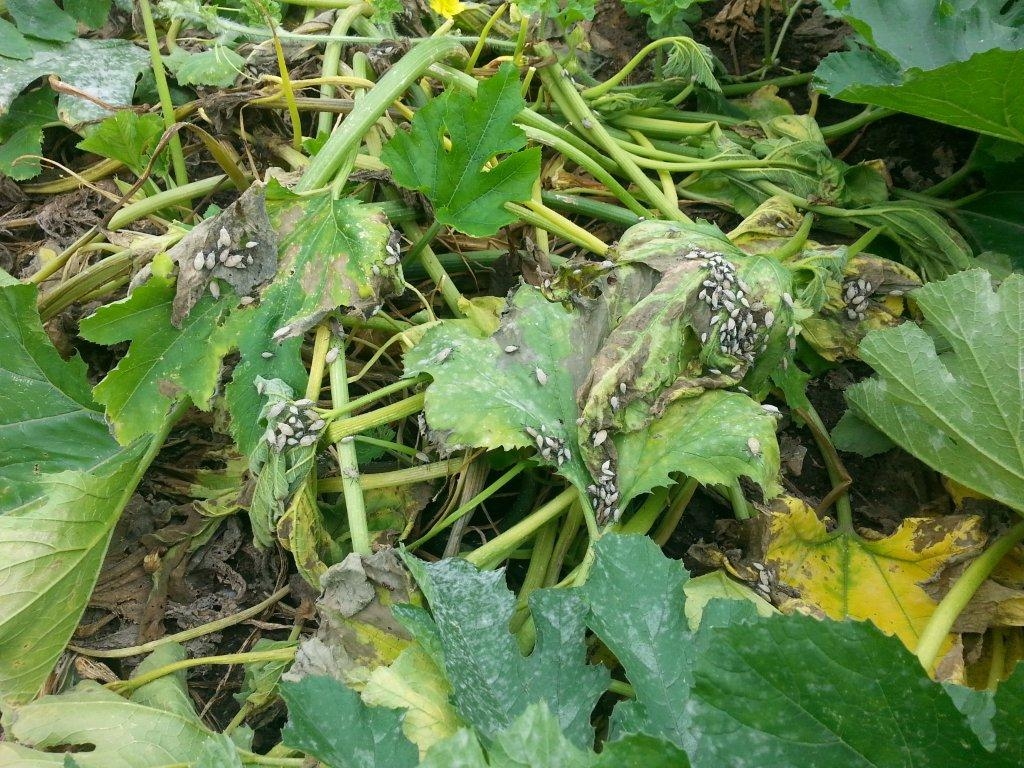Squash Bugs
Return to Vegetables Agent Articles
Every year, around June, there will be many questions about one of the most dreaded foes of the vegetable garden. Numerous problematic and unsightly squash bugs are known for siphoning the sap of the fruits they target to the point of no return. Moreover, they show up on squash and any vegetable remotely related to squash and gourd. They are nearly impossible to control if you don’t do so at the exact correct time. So, what can be done to control them? Are there any methods to putting these foes in their place?
The key to effective squash bug control lies in the early stages, with mitigation and a strategic approach to your garden. One of the most powerful tools at your disposal is crop rotation. Moving your susceptible vegetables to a different area each year can actively exclude newly growing plants from remnant pests that may have carried over in the soil or plant debris. This simple yet effective practice can significantly reduce the risk of a severe infestation.
Elsewhere, scouting for pests from the get-go will be your saving grace. Squash bugs lay their hard, burgundy-hued eggs in staggered rows along the underside of plant leaves. Looking for these early, you can try to smash them or pick them off, then discard them in soapy water. In many instances, however, you may find the eggs too hard to smash or too attached to remove. In this case, excision of that portion of the leaf, then disposing into soapy water, is recommended. While it may not be pretty, the uninfected leaf will still have enough surface area to photosynthesize and adequately feed the plant.
Beyond this point, you will begin needing to actively address an infestation, as the eggs will be hatching and nymphs feeding. If you’re willing to go the route, this is the best time to treat the plants with a pesticide, as the nymphs have not developed a hard-protecting exoskeleton yet.
If opting for chemical control, use a product with the active ingredient Spinosad, permethrin, cyhalothrin, or cyfluthrin. Label instructions should be carefully abided by for a proper and safe application. These should be applied in the evening while flowers are closed and pollinators are less active. Flowers should always be avoided so to protect pollinators.
There are options for opting to avoid a chemical route. Placing some form of a cover on the ground like a plank, tile, or piece of cardboard, the insects will congregate here in the early morning when searching for warmth. While not as effective, lifting the ground cover in the morning can let you hand-pick the pests, dropping them into soapy water. This is usually more effective with a flexible cover, such as cardboard. With the insects clung to it, the cardboard can be folded, and the insects funneled into the water, allowing them to spread while caught. Done early, this can be practiced several times in the morning before the sun's heat arrives.
Anthony Reardon, Small Farms Horticulture Agent, 2024
Other Resources
Have questions? The Garden Hotline is staffed by trained EMG volunteers and Extension staff who will assist you with questions.
Give our Garden Hotline a call (913-715-7050). Email detailed photos with your questions to garden.help@jocogov.org
